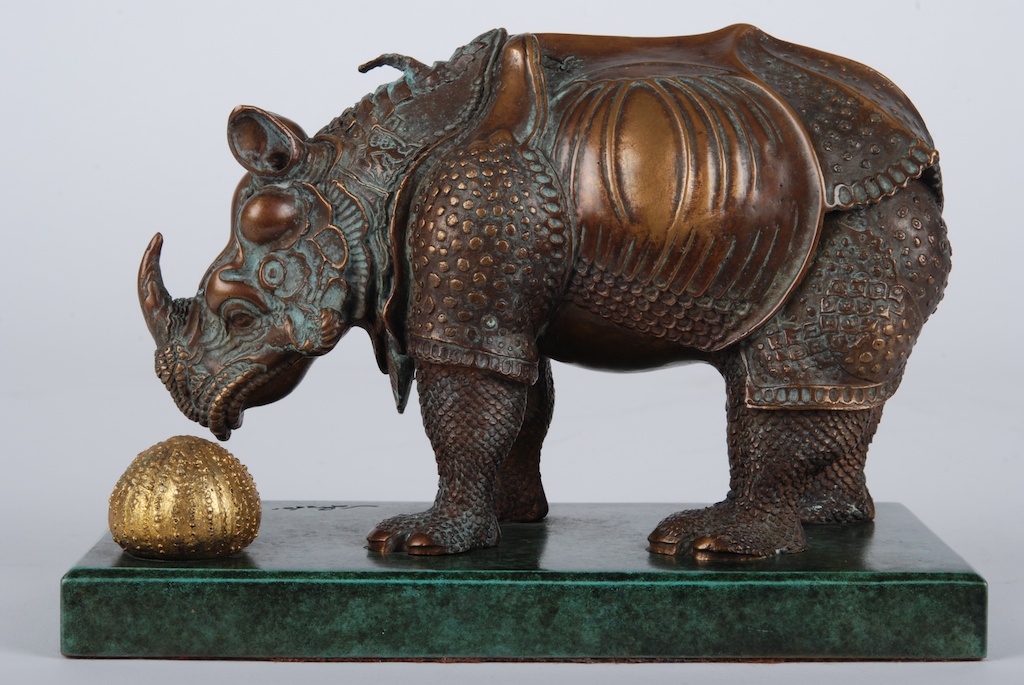

Dali was an ambitious and open minded artist whose career went far beyond the oil paintings found here. He even incorporated some of their specific work into his own unqiue style. Whilst drawing skills were the basis of all of his art, his painting ideas and techniques came from the Renaissance period, which has been influential on many famous names from the art world. Salvador Dali was predominantly a Surrealist painter who experimented with other art movements. We can also learn a lot about his own mind through the various portraits and self-portraits that can be found right across his career. He returned again and again to Freud's writings for inspiration. It was Freud's ground-breaking papers on the symbolism of sexuality in the psyche that encouraged Dali to search his subconscious for what was to become his signature dream images. Strangely, Freud’s influence on the young Dali was even more profound. Picasso's cubism is apparent in a vast array of Dali's work throughout his career. Miro had spoken highly of Salvador’s work to Picasso, and it is said that Picasso recognised Dali's genius almost immediately. Dali was a huge fan of Picasso's when he met him in Paris through an introduction from Joan Miro.

However, by far the greatest influence on his work came after he finished his formal education from two of the great men of his day Pablo Picasso, and Sigmund Freud. He explored all manner of styles including impressionism and cubism and began to develop a new "hybrid" style which quickly drew the attention of critics, good and bad. Listings wanted.It seemed a natural progression for him to study art in Madrid, where he was exposed to the works of all the greats, from Raphael to Velazquez. Today, his works are held in the collections of The Museum of Modern Art in New York, the Tate Modern in London, the Reina Sofia National Museum in Madrid, and the Museum Ludwig in Cologne, among others. Dalí died on Januin his hometown of Figueres, Spain. However, his pronounced sense of ego was not always unfounded, as evinced in his works inclusion in Alfred Hitchcock’s famous dream sequence from the film Spellbound (1945). A mixture of self-aggrandizing confessions and sadistic fantasies about his childhood, the book further outlined the artist’s outlandish persona. Dabbling in various projects throughout his long career, in 1942 he published the book The Secret Life of Salvador Dalí. Though the concept of Surrealism was new to him, Dalí was already well versed in the psychoanalytic theories of Sigmund Freud. During his visits to Paris in the late 1920s, he was introduced to the Surrealist movement by René Magritte and Joan Miró. At school, he emulated many contemporary styles but also the works of Johannes Vermeer and Diego Velázquez. Three years after his first exhibition at the age of 14, he enrolled at the Academia de San Fernando in Madrid.
.jpg)
Born Salvador Domingo Felipe Jacinto Dalí i Domènech on in Figueres, Spain, he displayed a great aptitude for the visual arts as a teenager. “One day it will have to be officially admitted that what we have christened reality is an even greater illusion than the world of dreams,” he once reflected. The Persistence of Memory (1931), arguably his best known work, visually manifests the strangeness of time by depicting clocks melting in an idyllic landscape. Art Brokerage: Park West Artist: Salvador Dali Spanish Artist: Salvador Dalí was a renowned Spanish Surrealist artist known for his enigmatic paintings of dreamscapes and religious themes.


 0 kommentar(er)
0 kommentar(er)
